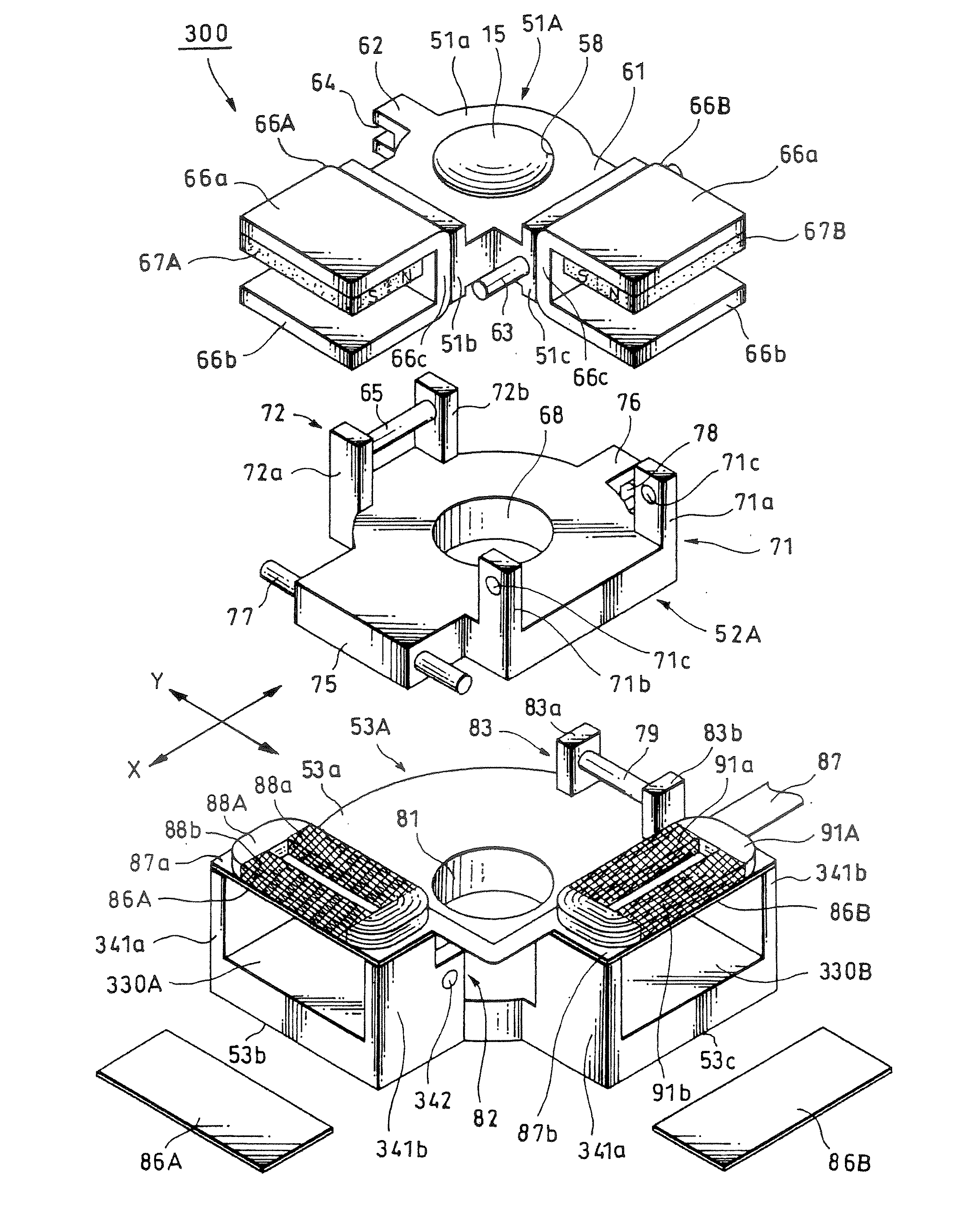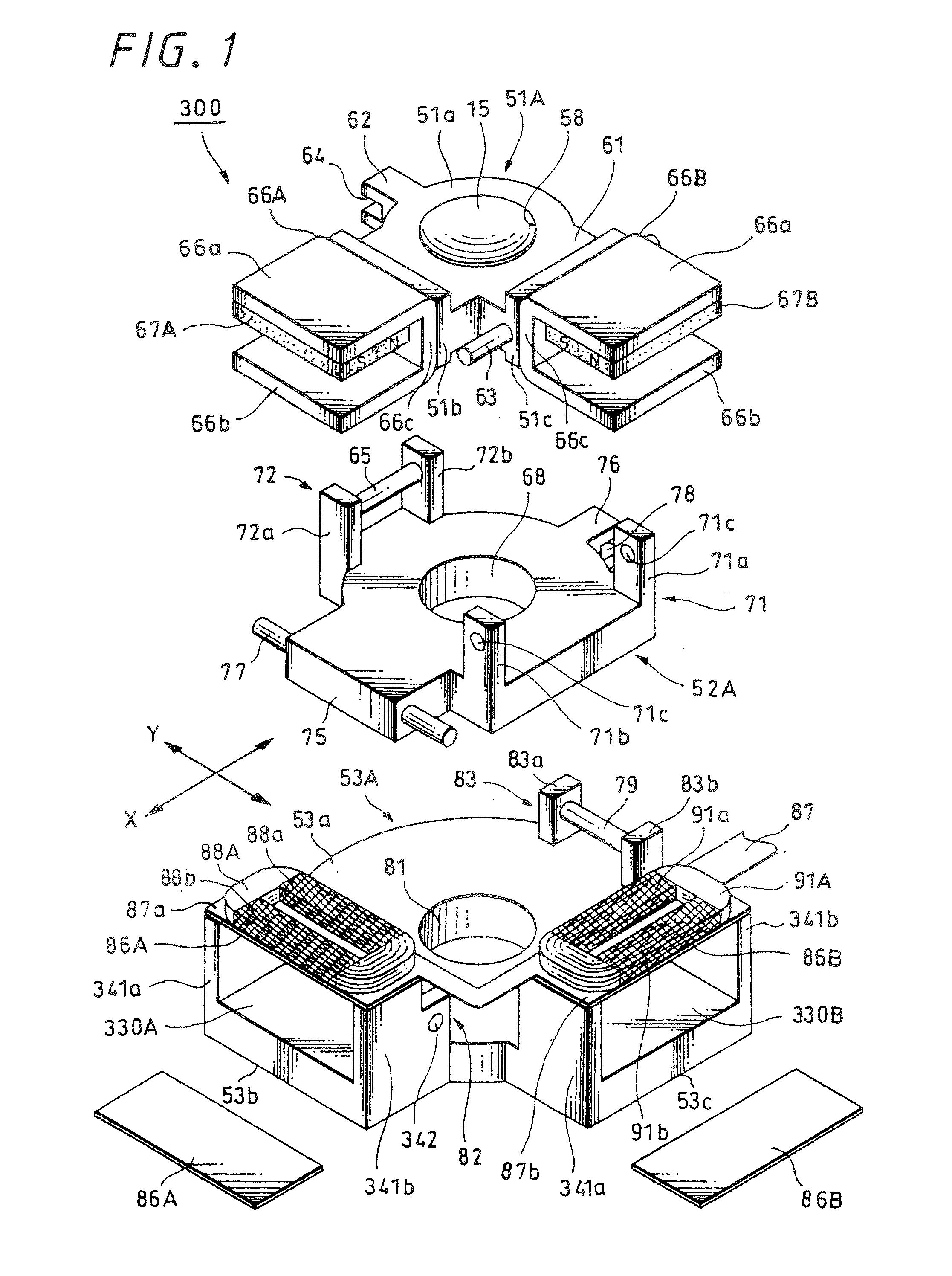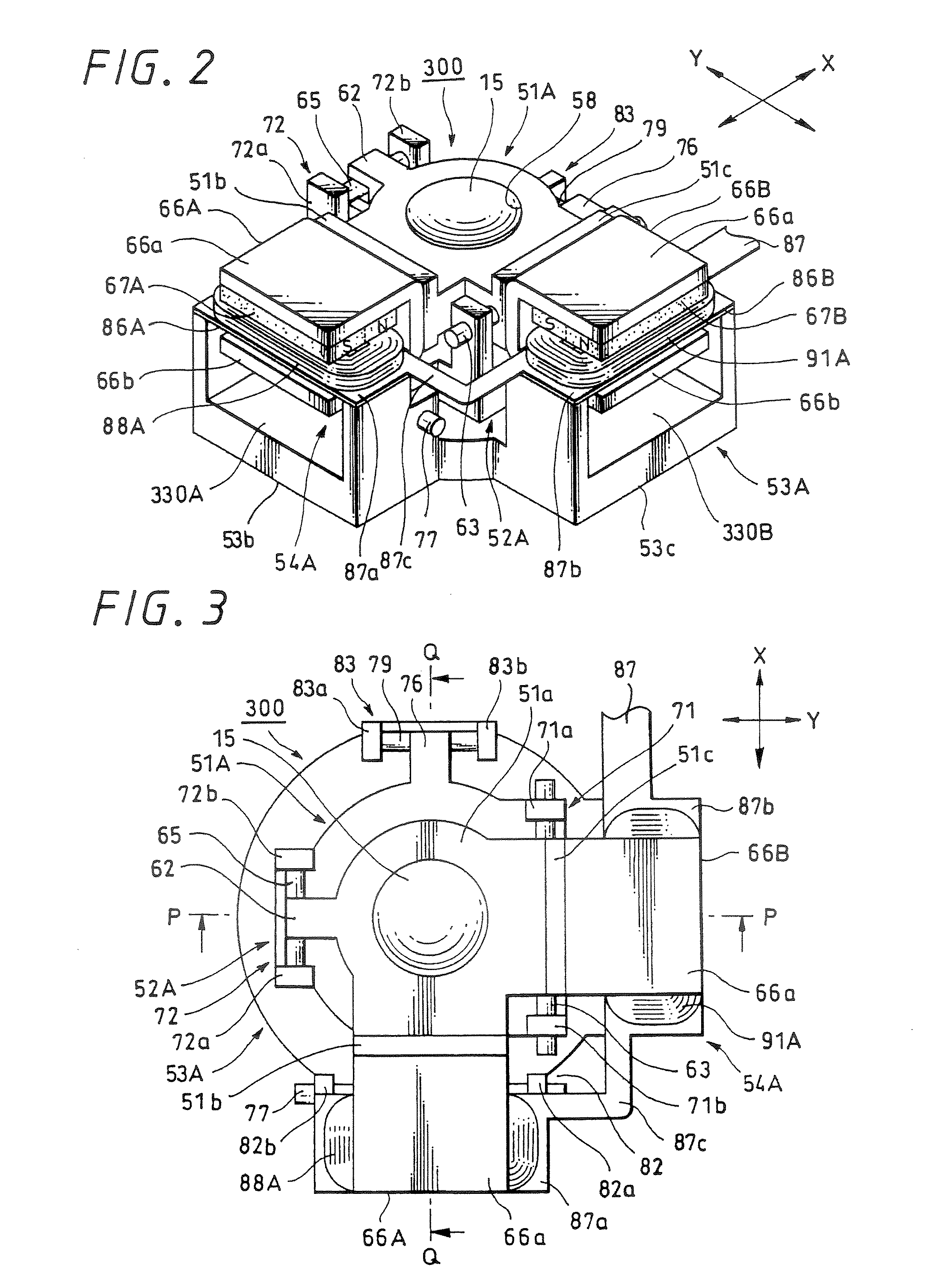Image stabilizer, lens device and imager apparatus
a technology of image stabilization and lens device, which is applied in the field of image stabilization, lens device and image stabilization apparatus, can solve the problems of difficult to miniaturize the whole of the image stabilization apparatus, and achieve the effect of preventing the image stabilization devi
- Summary
- Abstract
- Description
- Claims
- Application Information
AI Technical Summary
Benefits of technology
Problems solved by technology
Method used
Image
Examples
first embodiment
[0044] Further, FIGS. 10 to 12 explain a lens device according to the present invention: FIG. 10 is an explanatory diagram of a lens system; FIGS. 11A and 11B are a front view and a left side view of a lens device including an image stabilizer of a moving magnet system, respectively; and similarly, FIGS. 12A and 12B are a plan view and a perspective view respectively. FIG. 13 is a perspective view of a digital still camera representing a first example of an imager apparatus according to an embodiment of the present invention, as seen from the front side; and similarly FIG. 14 is a perspective view of a digital still camera, as seen from the rear side. FIG. 15 is a block diagram for explaining the concept of the control by an image stabilizer according to an embodiment of the present invention; FIG. 16 is a block diagram showing a first practice example of the schematic configuration of an imager apparatus according to an embodiment of the present invention; and similarly FIG. 17 is ...
second embodiment
[0136]FIG. 17 is a block diagram showing the schematic configuration of a digital still camera provided with an image stabilizer 300 having the above-described structure and functions. This digital still camera 200A includes a lens device 1, a video recording / reproducing circuit unit 160, an internal memory 161, a video signal processing unit 162, a display apparatus 163, an external memory 164, a correcting lens control unit 165 and the like. The lens device 1 has an image stabilizer 300. The video recording / reproducing circuit unit 160 plays a central role in a control device. The internal memory 161 has a program memory, data memory, other RAM / ROM or the like for driving the video recording / reproducing circuit unit 160. The video signal processing unit 162 processes a captured image or the like into a predetermined signal. The display apparatus 163 displays a captured image or the like. The external memory 164 enlarges storage capacity. The correcting lens control unit 165 drives...
PUM
 Login to View More
Login to View More Abstract
Description
Claims
Application Information
 Login to View More
Login to View More - R&D
- Intellectual Property
- Life Sciences
- Materials
- Tech Scout
- Unparalleled Data Quality
- Higher Quality Content
- 60% Fewer Hallucinations
Browse by: Latest US Patents, China's latest patents, Technical Efficacy Thesaurus, Application Domain, Technology Topic, Popular Technical Reports.
© 2025 PatSnap. All rights reserved.Legal|Privacy policy|Modern Slavery Act Transparency Statement|Sitemap|About US| Contact US: help@patsnap.com



